QuestionOkay I was cleaning out a shed for my chickens, because my dad had ask me too, and when I cleaned a top shelf I hit a huge chunk of mud and like 50 mice came running out! I thought okay no big deal just some mice, and when I removed the a good portion of the chunk I saw straw moving, I pushed threw the straw and found baby mice. 19 baby mice!!! I have had them for 5 days now and all of them have manage to stay alive. I have them rapped up in a paper towel, with some cotton fibbers(from a coat) around the paper towel, and bedded the top with hay and straw.
I think I got them in a warm spot, but my real question is, how and/or what do I feed them. I looked up mice growth and they look and seem around 12 or more days old. Lately I've been feeding them warm fresh goat milk. I pour some milk in my hand and dunk their noses/mouths in the creases. A few seem to be liking it up, but I can't tell for sure.
I really want to keep these babies alive, CAN YOU PLEASE HELP ME?!
AnswerHi Katie,
That's a lot of babies! Here's a link that will help you with most of your questions: http://www.rmca.org/Articles/orphans.htm It's for orphaned rats, but their care is very similar to mice. Mice take about 3 to 4 weeks to grow old enough to care for themselves - at which point you can return them to the area and instinct and the resident colony will take them the rest of the way. Make sure when you release them to do so in a covered, safe area where no predators will snap them up.
But that's in the future, here's what to do now. First, if you can use anything besides cotton fibers as bedding, do. Cotton is very good for keeping them warm, but can sometimes get caught around little baby toes and legs. If it's all you have it's okay, but I'd also recommend old clean rags (with no loose spots that can snag toes), toilet paper, tissues, anything that's soft and not likely to get caught. When they're small they're not that great at keeping warm, so a heating pad on its absolute lowest setting may help them between meals. Place it beneath their setup - never place a baby directly on the pad. They should be kept around 70-75 degrees if you can; the mommas used to sit on them to keep them toasty.
Goat milk is perfect - go ahead and keep feeding it to them. Don't dunk their heads, though, let them explore it themselves. If you push their heads into it they may breathe some in, causing an infection in the lungs if not suffocation. If they don't want to lick it, you can also try using a medicine dropper, a syringe without a needle, or tiny nipple with a bottle (like the sort used for tiny kittens). Try holding them in different positions when you feed them. You'll feel their tongues if they're lapping it up. Make sure everyone eats about 4-6 times a day at least, and let them have as much as they want. If they refuse the goat milk, you can also try kitten or puppy replacement (available at your local pet or feed store).
Place mouse feed or blocks, cheerios, or small chunks of stale bread in with them for when they start to move around and explore solid foods. They will do this all on their own - at which point you'll need to have them in a box or some sort of container so you don't lose them. Normally momma would keep them in the nest - but for now it's your job. You'll need to continue to feed them milk until they are about 4 weeks old. By that point they should be rambunctious, energetic, chubby, and completely mobile. They should be eating entirely on their own and only using the milk for hydration (min. 2 times per day). They'll look like slightly smaller mice than adults - eyes open, ears up, playing and exploring. When you're certain they are 4 weeks, maybe with a little extra if you're unsure, you can release them. Do not release any mouse that is low on energy, skinnier than its peers, has ungroomed, messy fur, or does not otherwise look well. You'll need to nurse any that aren't doing as well as their peers for a little extra time - use a gram scale if you need to determine if they're losing weight (your number one sign that something is wrong).
Because you will be releasing them (please write back if you meant to keep them, I'll give you different advice), you won't easily be able to mimic their normal water source. Because of this, the milk will be how they stay hydrated. If you need to water down the milk a bit once they start eating on their own you can, but make sure you let them have as much as they want.
Make sure they're going to the bathroom, too. Since you say they're about 12 days old, they should be going on their own, but if they do not want to eat and start to appear swollen, or if you do not see tiny poops in the bedding, you can wet down a cotton swab with warm water and gently massage their genitals, tummies, and bottoms. This starts their digestive system up and will rev up their appetite, and it's what momma does before she nurses them. Make sure you don't put a wet baby back in the nest - make sure they are completely dry so they don't chill. Pups are very tiny, so they can freeze very easily. In my experience, heat also helps digestion, so once you start feeding them you can turn on the heating pad (lowest setting ONLY) and it should help out their tummies. If nothing else works and you have a pup with a swollen belly and no appetite, try laying them in your dry hand, stomach down, and gently stroking their sides from front legs to back. Don't apply much pressure - just pet each side. Hopefully at this age, though, you shouldn't run into many feeding problems except the picky ones who only want to eat in a certain position. :)
Best of luck, and let me know if you have any more questions! You're on the right track.
-Tam

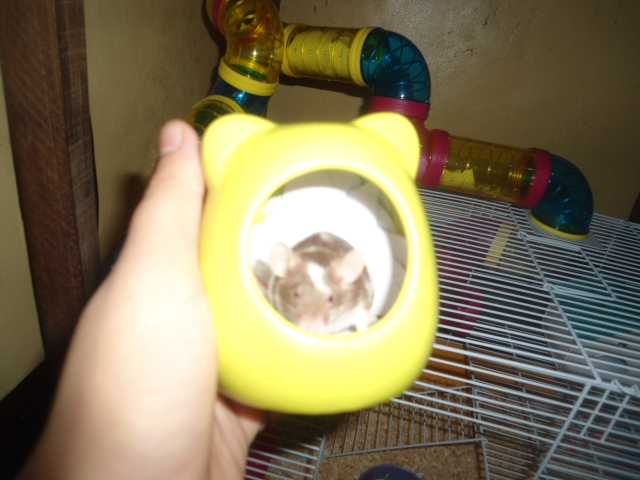 Is it okey to mate a mouse with another color mouse?
Question
My babynon-tan
hello miss natasha! I wa
Is it okey to mate a mouse with another color mouse?
Question
My babynon-tan
hello miss natasha! I wa
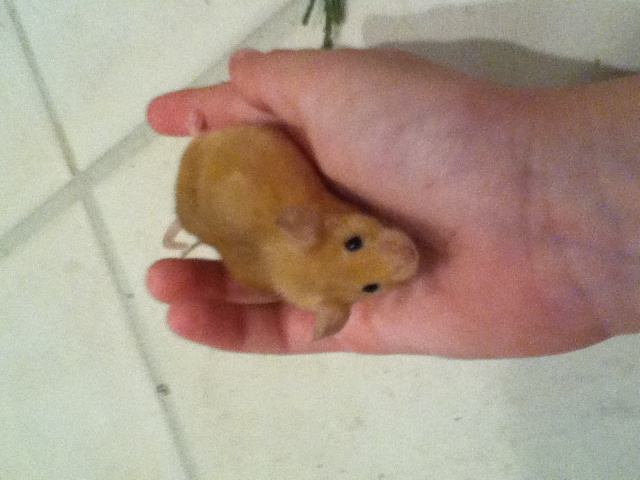 Can you keep males together?
Question
adult female baby mouse
Hi, I ha
Can you keep males together?
Question
adult female baby mouse
Hi, I ha
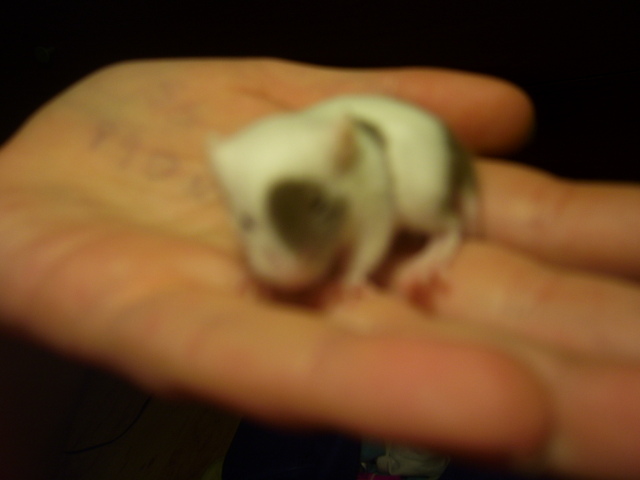 Showing mice/ letting pet mice free
QuestionQUESTION: Hello Natasha. I need your help
Showing mice/ letting pet mice free
QuestionQUESTION: Hello Natasha. I need your help
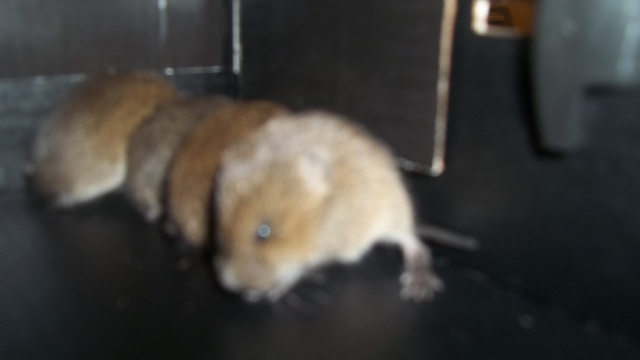 Found Baby Mice?
Question
Rescued babies All Four
My husban
Found Baby Mice?
Question
Rescued babies All Four
My husban
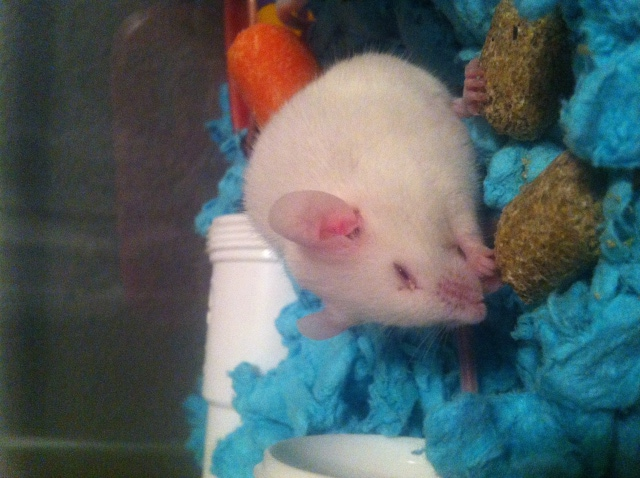 Mouse eye squinty with discharge
QuestionEye discharge
QUESTION: Hi, so I recent
Mouse eye squinty with discharge
QuestionEye discharge
QUESTION: Hi, so I recent